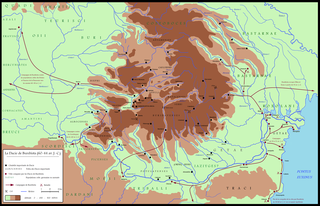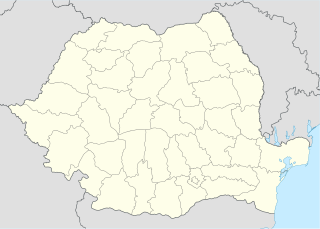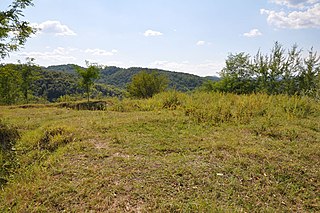This article needs additional citations for verification .(December 2009) (Learn how and when to remove this template message) |
The Apuli or Biefi were a Dacian tribe centered at the Dacian town Apulon (Latin Apulum ) near what is now Alba Iulia in Transylvania, Romania.

The Dacians were a Thracian people who were the ancient inhabitants of the cultural region of Dacia, located in the area near the Carpathian Mountains and west of the Black Sea. This area includes the present-day countries of Romania and Moldova, as well as parts of Ukraine, Eastern Serbia, Northern Bulgaria, Slovakia, Hungary and Southern Poland. The Dacians spoke the Dacian language, a sub-group of Thracian, but were somewhat culturally influenced by the neighbouring Scythians and by the Celtic invaders of the 4th century BC.

Apulon was a Dacian fortress city close to modern Alba Iulia, Romania from where the Latin name of Apulum is derived. The exact location is believed by many archaeologists to be the Dacian fortifications on top of Piatra Craivii, Craiva, Cricău, about 20 km north of Alba-Iulia.

Latin is a classical language belonging to the Italic branch of the Indo-European languages. The Latin alphabet is derived from the Etruscan and Greek alphabets, and ultimately from the Phoenician alphabet.
Contents
Apuli has clear resemblance to Apulia, the ancient southeastern Italy region, which is believed to have been settled by Illyrian tribes (also named Apuli or Iapyges).

Apulia is a region in Southern Italy bordering the Adriatic Sea to the east, the Ionian Sea to the southeast, and the Strait of Otranto and Gulf of Taranto to the south. The region comprises 19,345 square kilometers (7,469 sq mi), and its population is about four million.

Italy, officially the Italian Republic, is a country in Southern and Western Europe. Located in the middle of the Mediterranean Sea, Italy shares open land borders with France, Switzerland, Austria, Slovenia and the enclaved microstates San Marino and Vatican City. Italy covers an area of 301,340 km2 (116,350 sq mi) and has a largely temperate seasonal and Mediterranean climate. With around 61 million inhabitants, it is the fourth-most populous EU member state and the most populous country in Southern Europe.
Linguists use it as an example for the similarities between Illyrian and Dacian language. [1]

Dacian is an extinct Indo-European language that was spoken in the Carpathian region in antiquity. In the 1st century, it was probably the predominant language of the ancient regions of Dacia and Moesia and possibly of some surrounding regions. The language was probably extinct by the 7th century AD.





